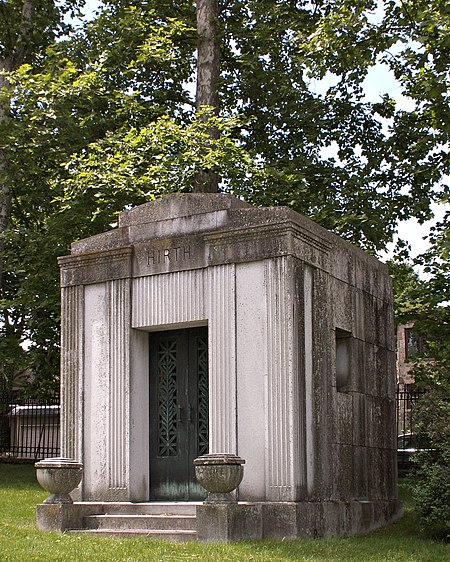
Domed mausoleums are relatively rare in Pittsburgh. Here is one that Thomas Jefferson might have approved of—but the cross, which would not have been found in a Protestant mausoleum in this style, lets us know that Mr. Maloney was a good Catholic. If that was not enough of a clue, we have the artificial flowers.

Addendum: It seems this mausoleum was designed by the famous ecclesiastical architect John T. Comès.1
- Source: The Construction Record, December 9, 1911: “Architect J. T. Comes, 1005 Fifth avenue, is taking bids on erecting a one-story limestone mausoleum in Calvary cemetery for M. F. Maloney, to cost $15,000.” ↩︎










